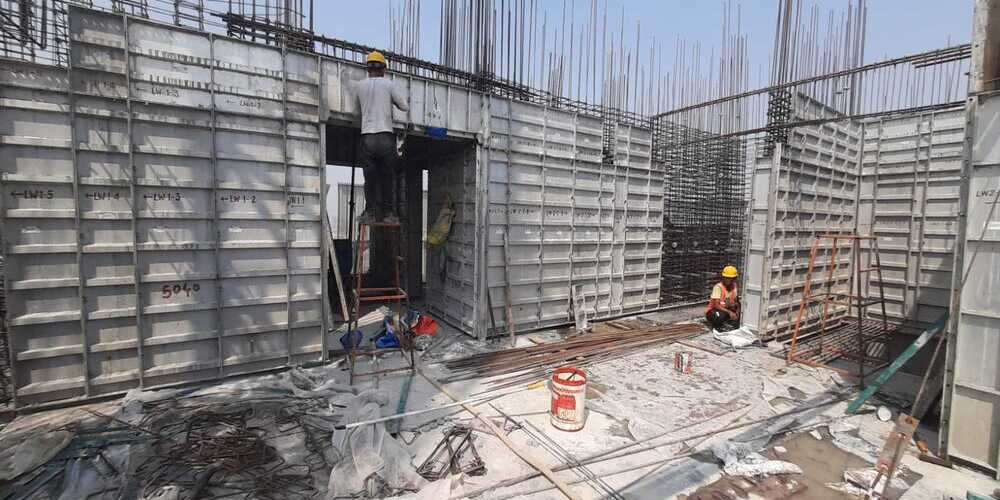5 Costly Mistakes Builders Make with Aluminium Formwork – Avoid These
Let’s face it — aluminium formwork is changing how India builds.
It’s faster. Stronger. Smarter.
But we’ve also seen builders lose money, time, and even damage the system — all because no one warned them what to avoid.
We will. Right now.
5 Costly Mistakes Builders Make with Aluminium Formwork (And How to Fix Them Properly)
Aluminium formwork has transformed construction across India, offering faster project completion and superior finish quality. However, many builders unknowingly make simple mistakes that lead to major losses - sometimes costing lakhs in repairs and delays. After working with hundreds of construction projects nationwide, we've identified the five most common errors and the best ways to prevent them.
1. Assuming Workers Know How to Handle Aluminium Formwork
Many contractors make the critical error of assuming their experienced laborers automatically understand aluminium formwork. Unlike traditional wooden shuttering, aluminium systems require precision handling.
What Goes Wrong:
- Workers accustomed to wooden formwork often use steel hammers to force panels into place, causing dents and bends
- Over-tightening of wedges leads to warped panels that don't align properly
- Improper sequencing during assembly results in misaligned joints and potential leaks
The Right Approach:
- Mandatory Training Sessions: Conduct hands-on training before starting work
- Proper Tools: Provide rubber mallets instead of steel hammers
- Supervision: Have a trained foreman oversee initial setups
Real Impact: A Noida-based builder reduced construction time by 18% after implementing proper training protocols.
2. Neglecting Proper Application of Form Oil
Form oil is the unsung hero of aluminium formwork, yet it's frequently overlooked until problems arise.
Common Consequences:
- Concrete bonds to panels, resulting in rough surface finishes
- Stripping time doubles as workers struggle to separate panels
- Premature wear and tear reduces formwork lifespan
Best Practices:
- Consistent Application: Oil must be applied before every pour, without exception
- Proper Technique: Use spray systems for even coverage (brush application often misses spots)
- Quality Matters: Invest in high-grade, temperature-stable release agents
Pro Tip: Builders in Mumbai found that proper oiling reduced stripping time by 40%, significantly accelerating project timelines.
3. Improper Storage and Handling Practices
The way formwork is stored between uses dramatically impacts its longevity and performance.
Storage Mistakes to Avoid:
- Leaving panels exposed to monsoon rains leads to warping
- Stacking panels directly on muddy ground causes bottom layers to deform
- Mixing different panel types together creates confusion during reassembly
Proper Storage Solutions:
- Designated Storage Area: Create a clean, level space with proper drainage
- Protective Covering: Use UV-resistant tarpaulins in all weather conditions
- Organized Stacking: Separate wall, slab, and column panels with clear labeling
4. Rushing the Assembly Process
In the rush to meet deadlines, many teams take shortcuts that ultimately cost more time.
Critical Errors:
- Forcing misaligned panels into position damages alignment pins
- Skipping pre-assembly checks leads to major rework
- Ignoring manufacturer's recommended sequences causes structural issues
Proper Assembly Protocol:
- Follow Drawings Exactly: Never assume all panels are interchangeable
- Stage Components: Lay out all pieces before starting assembly
- Quality Checks: Implement a three-point verification system
5. Failing to Track Panel Usage and Condition
Without proper tracking, formwork systems degrade much faster than necessary.
Tracking Failures:
- Unmarked panels get mixed up, causing assembly errors
- Minor damages go unnoticed until they become major issues
- No usage records make it impossible to predict maintenance needs
Effective Tracking System:
- Numbering System: Paint or tag every panel with unique identifiers
- Inspection Logs: Document condition after each use
- Damage Control: Immediately quarantine damaged components
Maintenance Fact: Proper tracking can extend formwork lifespan beyond 300 cycles in optimal conditions.
How many times can aluminium formwork be reused?
With proper care, high-quality aluminium formwork can last 250-300 cycles. Poor handling may reduce this to just 50-100 uses.

